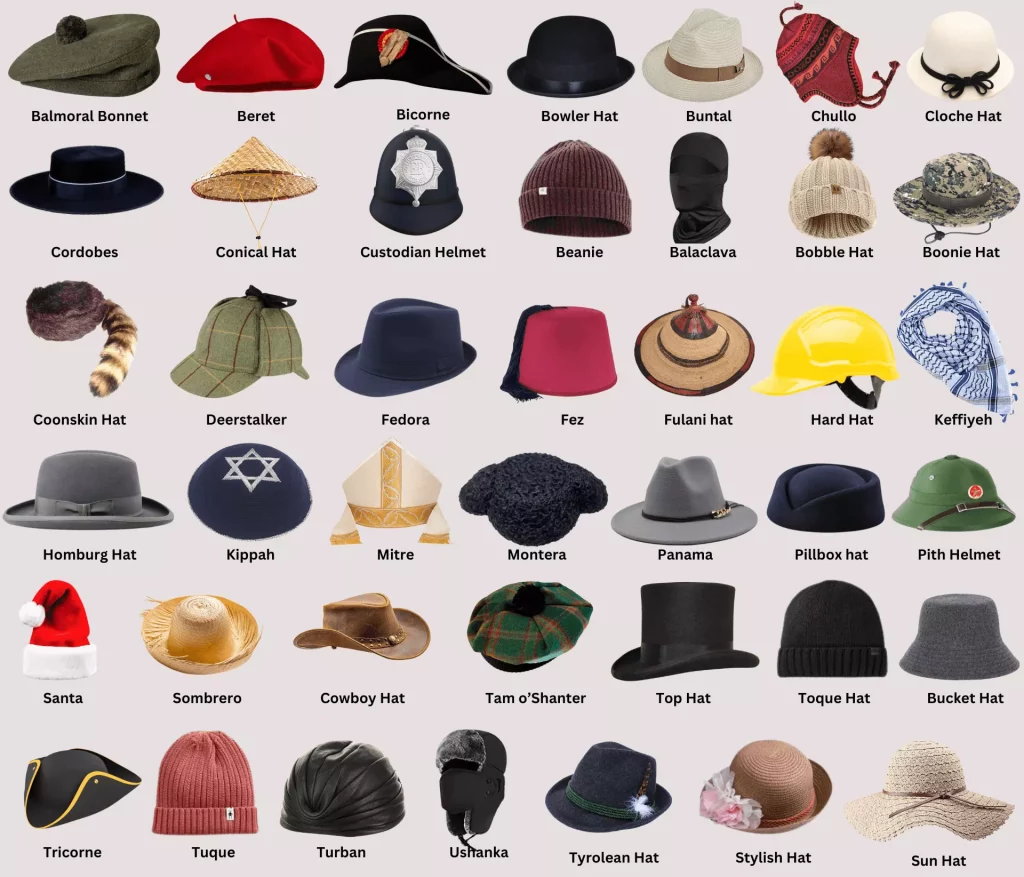Cap Compatibility: Ensuring a Perfect Seal for Product Integrity and Consumer Trust
Cap Compatibility: Ensuring a Perfect Seal for Product Integrity and Consumer Trust cars.truckstrend.com
In the intricate world of packaging, where form meets function, few elements are as crucial yet often overlooked as cap compatibility. Far more than just a lid, a cap is the guardian of a product’s integrity, a key component in user experience, and a silent ambassador for a brand’s commitment to quality. Cap compatibility refers to the perfect synergy between a container (be it a bottle, jar, or tube) and its closure, ensuring a secure, leak-proof seal that protects the product from external contaminants, preserves its intended properties, and facilitates effortless use.
The importance of getting cap compatibility right cannot be overstated. A mismatch can lead to disastrous consequences: product spoilage, costly leaks during transit, consumer frustration, and ultimately, severe damage to a brand’s reputation. Whether you’re in manufacturing, product development, logistics, or simply a consumer seeking to understand why some lids fit better than others, understanding the nuances of cap compatibility is essential. This comprehensive guide will delve into the critical aspects of this vital relationship, offering insights and practical advice to ensure your products are always perfectly sealed.
Cap Compatibility: Ensuring a Perfect Seal for Product Integrity and Consumer Trust
The Fundamentals of Cap Compatibility: A Symphony of Fit and Function
At its core, cap compatibility is about achieving a precise mechanical and material match between a container and its closure. This involves several fundamental aspects working in harmony:
- Mechanical Fit (Size and Thread Finish): This is the most visible aspect. Caps and containers are manufactured with specific neck finishes, which dictate their diameter and thread type. Standardized systems, like those from the Glass Packaging Institute (GPI) or Society of the Plastics Industry (SPI), provide common specifications (e.g., 28/400, 38/410) that ensure interchangeability between components from different manufacturers. The first number denotes the neck diameter in millimeters, and the second indicates the thread style.
- Sealing Mechanism: Beyond the thread, the cap must create an effective seal against the container’s rim or inner neck. This often involves a liner, a plug, or a specialized internal design within the cap.
- Material Compatibility: The cap and its liner (if present) must not react adversely with the product it contains. Chemical compatibility is paramount to prevent degradation of the cap, contamination of the product, or loss of product efficacy.
- Functional Compatibility: The cap’s intended function (e.g., dispensing, spraying, child-resistance, tamper-evidence) must be achievable and reliable when paired with the container.

Getting these fundamentals right is critical not only for preventing leaks but also for maintaining product shelf-life, ensuring regulatory compliance, and delivering a positive user experience.
Key Elements of Cap Design and Container Interface
A deeper dive into the specific components reveals the complexity involved in achieving perfect compatibility:

1. Thread Finish Standards (GPI/SPI)
These industry standards are the backbone of cap and container compatibility. Common thread types include:
- Continuous Thread (CT): The most common type, characterized by a continuous spiral thread. Examples: 28/400, 28/410, 33/400. The second number (e.g., 400, 410) indicates the specific thread profile, including thread height, pitch, and number of turns. Slight differences in these profiles can lead to incompatibility even if the diameter is the same.
- Lug Finish: Features interrupted threads (lugs) that catch on corresponding lugs on the container, allowing for a quick quarter-turn or half-turn closure. Commonly used for jars (e.g., food products).
- Snap-On/Snap-Fit: Relies on a friction fit or interlocking tabs rather than threads. Often used for quick-access closures or certain types of bottles.

2. Sealing Mechanisms and Liners
The liner is often the unsung hero of a secure seal. Placed inside the cap, it compresses against the container’s rim when the cap is tightened, creating a hermetic seal. Common liner types include:
- Foam (F217): A general-purpose liner, often a three-ply co-extruded material (e.g., polyethylene foam sandwiched between two layers of solid polyethylene). Good for general products, but not ideal for strong solvents or oils.
- Pressure Sensitive (PS): Adheres to the container’s rim when the cap is applied and tightened, forming a tamper-evident seal. Often seen on food products.
- Induction Heat Seal (IHS): Requires an induction sealing machine. A foil-laminated liner adheres to the container’s rim when heated, creating a strong, tamper-evident, and often hermetic seal. Excellent for extending shelf life and preventing leaks.
- PTFE (Teflon): Highly resistant to chemicals, often used for aggressive solvents or pharmaceutical products.
- Plastisol: A flowed-in compound that forms a seal by conforming to the container’s finish, often used for hot-fill food applications.
- Linerless Caps: Designed with an internal sealing bead or plug that forms the seal directly against the container’s inner or outer rim, eliminating the need for a separate liner.
3. Material Compatibility
The chemical composition of both the cap (and its liner) and the product must be compatible. For instance:
- HDPE/LDPE Caps: Good general resistance, but can be permeable to some solvents or essential oils over time.
- Polypropylene (PP) Caps: Higher temperature resistance and better chemical resistance than PE, making them versatile.
- Phenolic Caps: Excellent chemical and heat resistance, often used for strong acids or solvents.
- Metal Caps: Can offer excellent barrier properties but must be coated if used with corrosive products.
Failure to consider material compatibility can lead to cap degradation (cracking, swelling, discoloration), product contamination, or loss of product potency.
4. Cap Style and Functionality
The type of cap chosen must align with the product’s intended use and dispensing needs:
- Screw Caps: Basic, versatile, and secure.
- Flip-Top/Disc-Top Caps: For controlled dispensing of liquids or gels.
- Pump Dispensers: For lotions, soaps, and viscous liquids.
- Sprayers/Misters: For fine atomization of liquids.
- Droppers: For precise liquid dispensing.
- Child-Resistant (CR) Caps: Require a specific action (e.g., push down and turn) to open, mandated for hazardous products.
- Tamper-Evident Caps: Show clear signs of tampering if opened (e.g., break-away bands, induction seals).
Each style has specific design requirements that must interface correctly with the container’s neck.
The Importance of Testing and Validation
Assuming compatibility based on specifications alone is a recipe for disaster. Rigorous testing is non-negotiable for ensuring cap compatibility:
- Leak Testing: Essential for preventing product loss. Methods include vacuum testing (simulates altitude changes), pressure testing, and drop tests.
- Torque Testing: Measures the force required to apply (application torque) and remove (removal torque) the cap. Proper torque ensures a secure seal without being too difficult for consumers to open or risking stripping threads.
- Environmental Testing: Exposing filled packages to varying temperatures, humidity, and vibrations to simulate real-world shipping and storage conditions. This reveals potential issues like material expansion/contraction or liner degradation.
- Shelf-Life Testing: Long-term storage tests to observe any chemical interactions, permeability issues, or seal degradation over the product’s intended shelf life.
- Consumer Use Testing: Observing actual users interacting with the packaged product to identify any difficulties in opening, closing, or dispensing.
Common Challenges and Solutions in Cap Compatibility
Even with careful planning, challenges can arise. Understanding them is the first step to finding solutions:
- Leaking/Spillage:
- Challenge: Incorrect thread match, insufficient sealing surface, liner degradation, or improper application torque.
- Solution: Verify thread specifications, ensure liner material is compatible, optimize torque settings, and implement automated capping equipment with precise controls.
- Cross-Threading/Stripping:
- Challenge: Misalignment during capping, poor thread quality, or overtightening.
- Solution: Use automated capping machinery with proper alignment mechanisms, source high-quality caps and containers, and educate consumers on correct opening/closing.
- Difficult to Open/Close:
- Challenge: Excessive application torque, poor cap design, or material friction.
- Solution: Optimize torque, choose ergonomic cap designs, and consider different liner materials.
- Product Degradation/Contamination:
- Challenge: Insufficient barrier properties of the cap/liner, chemical interaction with the cap material, or inadequate seal allowing oxygen/moisture ingress.
- Solution: Select appropriate barrier materials (e.g., induction seals, PTFE liners), conduct rigorous material compatibility tests, and ensure hermetic sealing.
- Regulatory Non-Compliance:
- Challenge: Using materials not approved for food/pharma contact, or failing to meet child-resistant standards.
- Solution: Always verify regulatory compliance (FDA, EU regulations, etc.) for all packaging components.
Practical Steps for Ensuring Cap Compatibility
For anyone involved in packaging, here’s a step-by-step guide to achieving optimal cap compatibility:
- Define Product Needs: Understand your product’s chemical properties (pH, viscosity, volatility), temperature requirements, shelf-life, and regulatory classification. This dictates material and barrier needs.
- Understand Container Specifications: Obtain precise drawings and specifications for your chosen container, paying close attention to neck finish, material, and dimensions.
- Select Appropriate Cap Type and Material: Based on product needs and container specs, choose the right cap style (screw, pump, CR, etc.) and material. Always consider the liner type in conjunction with the cap.
- Source from Reputable Suppliers: Work with packaging suppliers who have a proven track record, offer detailed specifications, and can provide samples for testing.
- Conduct Comprehensive Testing: Never skip the testing phase. Perform leak tests, torque tests, environmental tests, and shelf-life tests with actual product. This is where theoretical compatibility becomes practical validation.
- Implement Quality Control: Establish incoming quality checks for both containers and caps, and monitor capping operations to ensure consistent application torque and proper sealing.
- Consider User Experience: Even a technically perfect seal can be frustrating if it’s too hard to open or use. Balance security with ease of access.
Cap Compatibility: Key Considerations Checklist
| Feature/Aspect | Description | Importance | Potential Issues |
|---|---|---|---|
| Thread Finish | Diameter (mm) & Thread Style (e.g., 28/400, 38/410, lugs). Must match container neck finish. | Essential for mechanical fit, secure closure, and preventing cross-threading. | Leaks, cross-threading, cap popping off. |
| Cap Material | Type of plastic (PP, HDPE, LDPE, Phenolic) or metal. | Chemical resistance to product, temperature stability, durability. | Cap degradation (cracking, swelling), product contamination. |
| Liner Type | Foam, PS, IHS, PTFE, Plastisol, Linerless. | Creates the seal, provides barrier properties, tamper-evidence. | Leaks, insufficient barrier, product spoilage, no tamper-evidence. |
| Sealing Surface | Design of the cap’s interior (bead, land area) and container’s rim. | Critical for forming a tight seal with the liner/cap’s internal mechanism. | Incomplete seal, localized leaks. |
| Application Torque | The rotational force applied to tighten the cap. | Ensures proper seal, prevents overtightening/undertightening. | Leaks (undertorque), stripping, difficult to open (overtorque). |
| Removal Torque | The force required to open the cap. | User experience, accessibility. | Consumer frustration, product returns. |
| Product Chemistry | pH, viscosity, volatility, corrosive properties of the contents. | Determines suitable cap/liner materials, potential for interaction. | Material degradation, product contamination/alteration. |
| Regulatory Compliance | Food-grade, pharmaceutical-grade, child-resistant, tamper-evident requirements. | Legal compliance, consumer safety, market access. | Fines, recalls, brand damage. |
| Environmental Conditions | Temperature, humidity, vibration during shipping and storage. | Affects material expansion/contraction, seal integrity over time. | Leaks, product instability, packaging failure. |
| Dispensing Method | How the product will be accessed (pour, spray, pump, squeeze). | Dictates cap style (flip-top, sprayer, pump, dropper). | Poor dispensing, user frustration, product waste. |
Frequently Asked Questions (FAQ) about Cap Compatibility
Q1: How do I know what size cap I need for my bottle?
A1: You need to know the bottle’s neck finish, typically expressed as two numbers (e.g., 28/410). The first number (28mm) is the diameter of the bottle’s opening. The second number (410) is the thread style, which defines the thread’s height, pitch, and number of turns. Your bottle supplier can provide this specification.
Q2: Can I use any 28/410 cap on any 28/410 bottle?
A2: While the diameter and general thread style might match, slight variations in manufacturing tolerances between different suppliers can lead to issues. Always test caps and bottles together from your intended suppliers to ensure perfect compatibility. Sometimes, a specific 28/410 cap from one manufacturer might not fit a 28/410 bottle from another as snugly or securely.
Q3: What is the difference between a 28/400 and a 28/410 thread?
A3: Both have a 28mm neck diameter, but their thread profiles differ. A 400 thread typically has two full turns of thread, while a 410 thread has one-and-a-half turns. This difference affects how the cap engages and seals, so they are generally not interchangeable. Using the wrong thread can lead to leaks, cross-threading, or difficulty opening/closing.
Q4: Why are liners so important for cap compatibility?
A4: Liners create the primary seal between the cap and the container’s rim. They compensate for minor imperfections in the sealing surfaces and provide additional barrier properties (e.g., against oxygen, moisture). Without the correct liner, even a perfectly threaded cap might not prevent leaks or product degradation.
Q5: What does "child-resistant" (CR) cap compatibility mean?
A5: CR caps are designed to prevent young children from opening them, often requiring a "push down and turn" or "squeeze and turn" action. Compatibility means not only that the cap fits the bottle’s neck finish but also that the child-resistant mechanism functions correctly and reliably when paired with that specific container. These caps must pass rigorous testing protocols to meet regulatory standards.
Q6: My product is leaking even with the correct cap. What could be wrong?
A6: Several factors could be at play:
- Insufficient application torque: The cap isn’t tightened enough.
- Damaged sealing surface: A chip or defect on the bottle’s rim or inside the cap.
- Incorrect liner: The liner material isn’t compatible with your product or isn’t creating an effective seal.
- Material expansion/contraction: Temperature changes cause the bottle or cap to expand/contract differently, breaking the seal.
- Over-filling: Product trapped in the threads can prevent a proper seal.
- Ventilation issues: Some products require caps that allow for gas exchange; using a completely hermetic seal might build pressure.
Conclusion
Cap compatibility is a cornerstone of effective packaging, far more intricate than simply screwing a lid onto a bottle. It’s a delicate balance of mechanical precision, material science, and functional design, all working in concert to protect a product, comply with regulations, and enhance the consumer experience. By understanding the key elements, committing to rigorous testing, and collaborating closely with reputable suppliers, businesses can ensure their products are not just contained, but truly safeguarded. Investing in proper cap compatibility is an investment in product integrity, brand reputation, and ultimately, lasting consumer trust.






